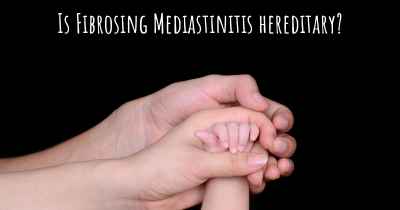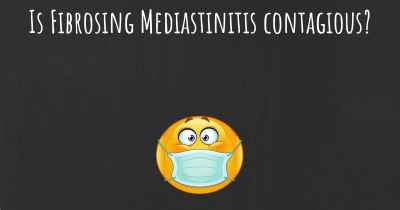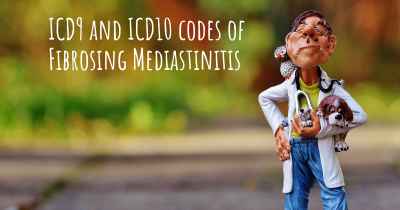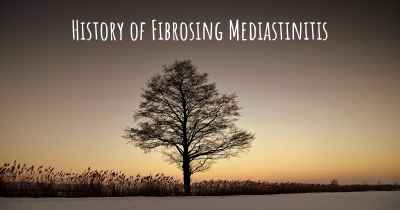What is the life expectancy of someone with Fibrosing Mediastinitis?
Life expectancy of people with Fibrosing Mediastinitis and recent progresses and researches in Fibrosing Mediastinitis
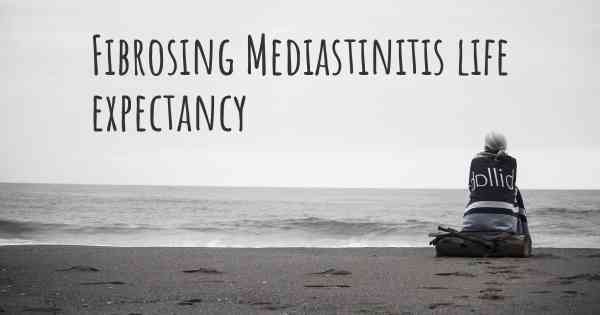
Fibrosing Mediastinitis is a rare condition characterized by the excessive growth of fibrous tissue in the mediastinum, the area between the lungs. The life expectancy of individuals with Fibrosing Mediastinitis can vary depending on various factors such as the extent of the fibrosis, the involvement of vital structures, and the effectiveness of treatment. Unfortunately, there is limited data available regarding the prognosis of this condition. It is crucial for patients to consult with their healthcare providers to discuss their specific case and receive appropriate medical guidance. Early diagnosis and prompt management can potentially improve outcomes and enhance the quality of life for individuals with Fibrosing Mediastinitis.
Fibrosing mediastinitis is a rare and serious condition characterized by the excessive growth of fibrous tissue in the mediastinum, the central compartment of the chest that contains the heart, major blood vessels, esophagus, and other vital structures. This abnormal growth can lead to compression and narrowing of these structures, causing various symptoms and complications.
The prognosis of fibrosing mediastinitis can vary significantly depending on several factors, including the extent and location of fibrous tissue growth, the involvement of critical structures, the underlying cause, and the promptness of diagnosis and treatment.
Causes and Risk Factors:
Fibrosing mediastinitis can be classified into two types: primary and secondary. Primary fibrosing mediastinitis, also known as idiopathic fibrosing mediastinitis, occurs without a known cause. Secondary fibrosing mediastinitis is associated with an underlying condition, most commonly histoplasmosis, a fungal infection caused by inhaling spores found in bird or bat droppings.
Symptoms and Diagnosis:
The symptoms of fibrosing mediastinitis can vary depending on the structures affected and the degree of compression. Common symptoms include chest pain, shortness of breath, cough, difficulty swallowing, and fatigue. In some cases, the condition may be asymptomatic and only discovered incidentally during imaging tests performed for other reasons.
Diagnosing fibrosing mediastinitis typically involves a combination of medical history evaluation, physical examination, imaging studies (such as chest X-ray, computed tomography (CT) scan, or magnetic resonance imaging (MRI)), and sometimes invasive procedures like bronchoscopy or biopsy to confirm the diagnosis and rule out other conditions.
Treatment Options:
There is no cure for fibrosing mediastinitis, and treatment aims to manage symptoms, prevent complications, and improve quality of life. The choice of treatment depends on the severity of symptoms, the extent of fibrous tissue growth, and the involvement of critical structures.
Medical management often involves the use of medications to relieve symptoms such as pain, inflammation, and shortness of breath. Corticosteroids and immunosuppressive drugs may be prescribed to reduce inflammation and slow down the progression of fibrosis. In some cases, antifungal medications may be used if the condition is associated with histoplasmosis.
In severe cases where there is significant compression of vital structures or the development of complications like heart failure or pulmonary hypertension, surgical intervention may be necessary. Surgery aims to relieve the compression and restore normal function. However, due to the complexity and potential risks of the procedure, it is typically reserved for selected cases.
Prognosis and Life Expectancy:
The prognosis of fibrosing mediastinitis can be challenging to predict due to its rarity and variability. The condition's progression and outcome can differ significantly from person to person. Some individuals may experience a relatively stable course with manageable symptoms, while others may have a more aggressive disease course with rapid deterioration.
Unfortunately, fibrosing mediastinitis can be a life-threatening condition, particularly when critical structures like the heart or major blood vessels are severely compressed. Complications such as heart failure, pulmonary hypertension, or respiratory compromise can significantly impact life expectancy.
It is important to note that fibrosing mediastinitis is a chronic condition that requires long-term management and monitoring. Regular follow-up with healthcare providers, adherence to prescribed treatments, and lifestyle modifications can help optimize outcomes and improve quality of life.
In conclusion, fibrosing mediastinitis is a rare condition characterized by excessive fibrous tissue growth in the mediastinum. The prognosis and life expectancy can vary depending on several factors, including the extent of fibrosis, involvement of critical structures, underlying cause, and timely management. While there is no cure for fibrosing mediastinitis, treatment aims to alleviate symptoms and prevent complications. Regular medical follow-up and adherence to treatment plans are crucial for individuals with this condition.
Posted Mar 17, 2018 by Sharon 4460

